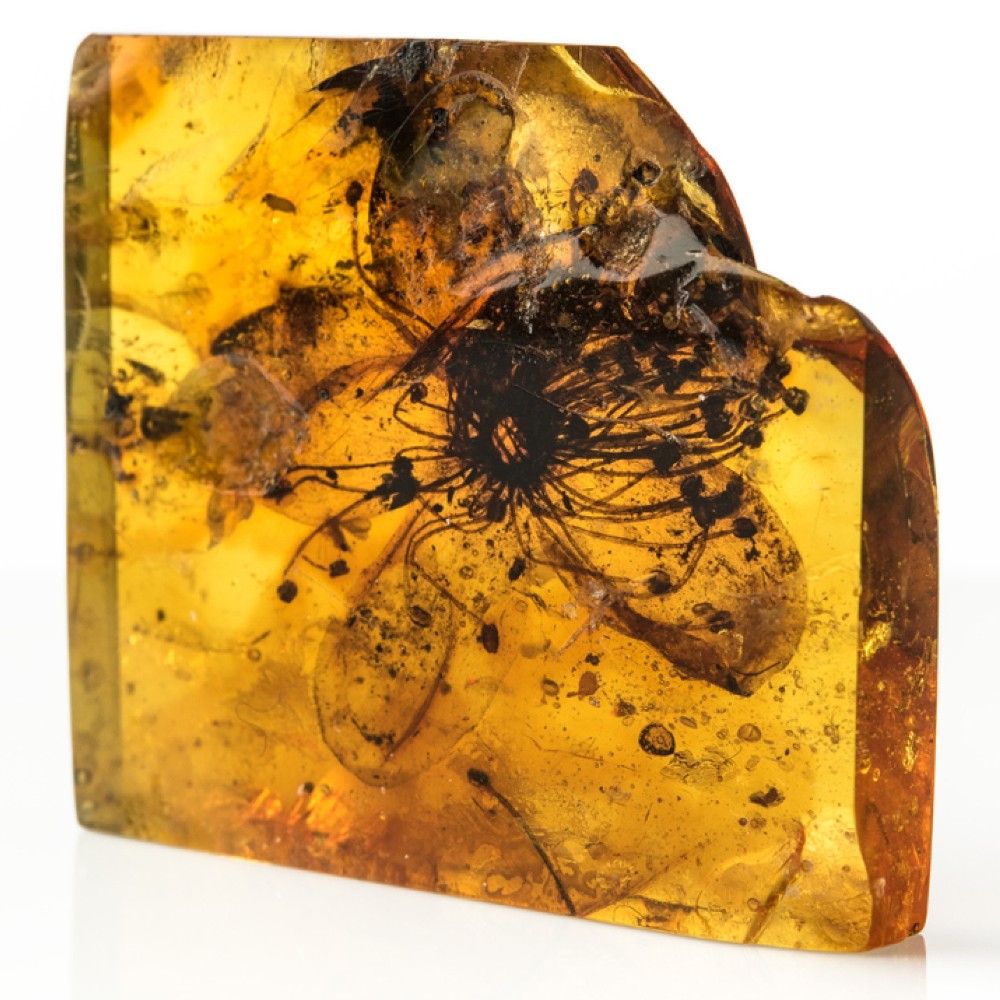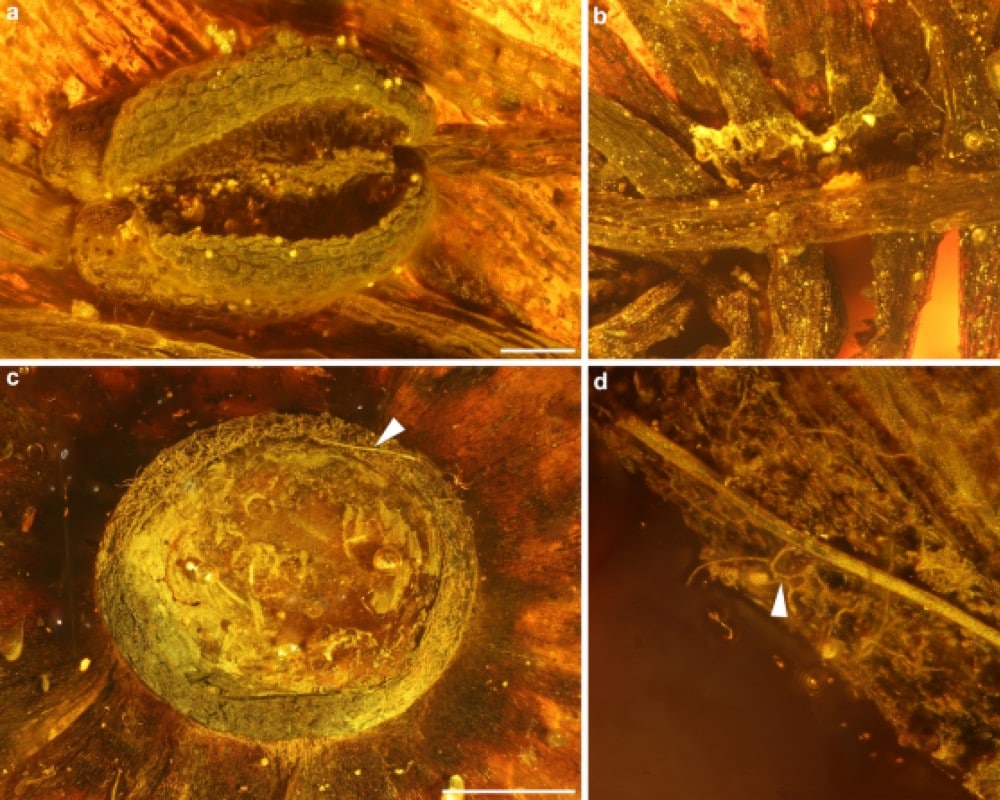
An ancient amber-preserved fossilized bloom has recently stirred curiosity among scientists. In 1872, scientists unearthed a large fossil specimen from a mine. After a few examinations, they identified the flora species as Stewartia kowalewskii, an extinct evergreen flowering plant. Then for the next 150 years, this immortalized blossom largely remained forgotten, sitting in a German museum collection.
The Mistaken Identity
A recent reexamination of the specimen has made researchers announce that the flower’s identity was mistaken till now. Using new technology, they’ve recently concluded that the flower in the fossil came from Symplocos, an entirely different genus of flowering species growing today in Japan and southeast China. They also proposed a new name for the amber-preserved flower fossil- Symplocos kowalewskii. The researchers shared more of their new findings in a recent paper published in Scientific Reports.
The Flower Fossil

The long saga of the fossil likely began during the late Eocene, some 34-38 million years ago. The natural preservation occurred near the Baltic Sea, now in Russia. A big blob of sticky resin oozed out from a conifer tree, and a large five-petal flower got coated by that tacky substance, which solidified into amber over time. Amber-encased plants are usually uncommon, with just 1-3% of botanical organisms found to be trapped in Baltic amber. As it takes a lot of resin to surround a big bloom, large flower fossils are even rarer. Singular preserved flowers are usually quite small, but this particular fossilized amber flower is more than an inch wide. It’s the largest known amber-preserved bloom in the world, three times larger than its successor.
The Recent Study
Eva-Maria Sadowski, a paleobotanist and paleontologist at the Natural History Museum in Berlin, learned about the massive amber-preserved prehistoric flower stored as a part of the tree-resin collection at the Federal Institute for Geosciences and Natural Resources, Germany. Believing the size an exaggeration, Sadowski decided to check for herself and eventually laid eyes on specimen X4088, the official name of the fossil in the museum. Her scientific curiosity intrigued her to study the fossilized blossom further.
The New Analysis

After polishing the amber block, Sadowski examined the flower under a scanning electron microscope, which revealed that, along with the stamens and petals of the flower, the amber also had preserved tiny grains of pollen. Using extremely high magnification, Sadowski and her collaborator Christa-Charlotte Hofmann analyzed the morphological details of the pollen grains and inspected the blossom’s anatomy closely, which led them to their conclusion.